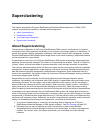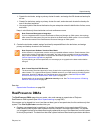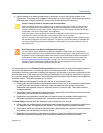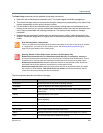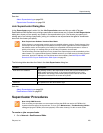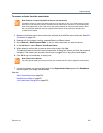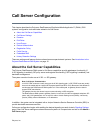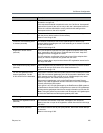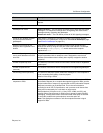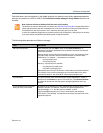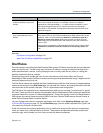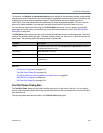
Polycom, Inc. 233
Call Server Configuration
This chapter describes the Polycom
®
RealPresence
®
Distributed Media Application™ (DMA
®
) 7000
system’s configuration tools and tasks related to its Call Server:
● About the Call Server Capabilities
● Call Server Settings
● Domains
● Dial Rules
● Hunt Groups
● Device Authentication
● Registration Policy
● Prefix Service
● Embedded DNS
● History Retention Settings
These are settings and features that are shared across superclustered systems. See Introduction to the
Polycom RealPresence DMA System on page 15.
About the Call Server Capabilities
The Polycom RealPresence DMA system’s Call Server capabilities provide gatekeeper functionality (if
H.323 signaling is enabled), SIP proxy server and registrar functionality (if SIP signaling is enabled), and
bandwidth management.
The system can also function as an H.323 <-> SIP gateway.
In addition, the system can be integrated with a Juniper Networks Service Resource Controller (SRC) to
provide bandwidth assurance services.
Call server configuration begins with enabling the desired signaling on each cluster’s Signaling Settings
page. Other Call Server settings are shared across all systems in a supercluster and set on the Admin >
Call Server pages.
Note: Call Server Characteristics
In H.323, DTMF tones are usually sent over the H.323 signaling path. In SIP, DTMF tones are usually
sent over the media path as a special RTP payload packet (see RFC 4733). Because of this difference
and because the RealPresence DMA system isn’t in the media path, its gateway function doesn’t
support DTMF transmission.
The gateway function also doesn’t support content sharing or AES encryption.
The RealPresence DMA system’s gateway function is used only for calls to registered endpoints, SIP
peers, and H.323 gatekeepers. It’s not used for calls to virtual meeting rooms (VMRs), virtual entry
queues (VEQs), external addresses, or IP addresses.




